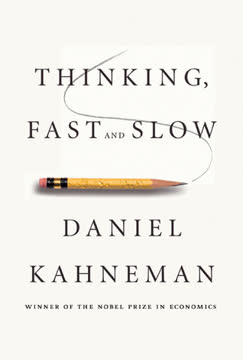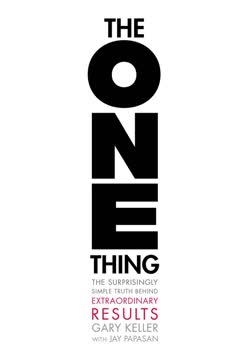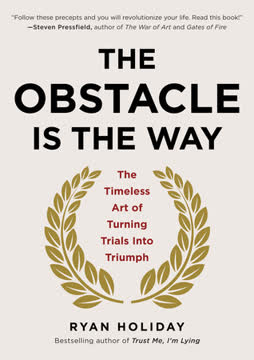Key Takeaways
1. Embrace life's work as an art form, not just a job
Your life's work is an Art in the sense of expressing your essential self in the world of forms.
Art of living. Approaching your career as a work of art allows you to infuse creativity, meaning, and self-expression into your daily work. This perspective shifts the focus from mere employment to crafting a life of purpose and fulfillment. By viewing your career as an art form, you can:
- Bring your unique talents and vision to your work
- Find beauty and significance in everyday tasks
- Continuously refine and improve your craft
- Express your values and ideals through your actions
- Create a legacy that reflects your authentic self
Inspiration and discipline. Like any art form, a fulfilling career requires both inspiration and discipline. Allow yourself to be guided by your passions and intuitions, but also cultivate the skills and habits necessary to bring your vision to life. This balance of creative spark and dedicated effort is the essence of a truly artful approach to work and life.
2. Align your career with your values, talents, and purpose
Aristotle: "Where your talents and the needs of the world cross, there lies your vocation."
Self-discovery process. Finding your life's work involves a deep exploration of your core values, innate talents, and sense of purpose. This self-discovery process helps you identify career paths that resonate with your authentic self. Key steps include:
- Clarifying your personal values and ethical principles
- Identifying your natural strengths and abilities
- Defining your vision for a better world
- Exploring how your unique gifts can serve others
- Seeking opportunities where your passions intersect with societal needs
Holistic approach. Rather than focusing solely on skills or job titles, take a holistic view of your career potential. Consider how different roles might allow you to express your values, utilize your talents, and contribute to causes you care about. This alignment creates a sense of meaning and fulfillment that goes beyond traditional notions of success.
3. Overcome fear and self-doubt to pursue your true calling
Lives based on having are less free than lives based on either doing or being.
Confronting limiting beliefs. Many people hesitate to pursue their true calling due to fear, self-doubt, or societal expectations. Recognize these limiting beliefs for what they are – internal obstacles that can be overcome. Common fears include:
- Fear of failure or inadequacy
- Fear of financial instability
- Fear of disapproval from others
- Fear of the unknown or change
Courage and self-trust. Developing the courage to follow your authentic path requires cultivating self-trust and resilience. Strategies to build confidence include:
- Acknowledging your fears without letting them control you
- Taking small, consistent steps toward your goals
- Surrounding yourself with supportive people
- Reframing setbacks as learning opportunities
- Focusing on personal growth rather than external validation
4. View work as creative self-expression rather than problem-solving
Work is simply the forms into which we pour this living substance of love.
Shift in perspective. Rather than seeing work primarily as a means to solve problems or earn a living, approach it as an opportunity for creative self-expression. This mindset allows you to:
- Find joy and fulfillment in the process of work itself
- Bring your unique perspective and ideas to your field
- Continuously innovate and improve your methods
- Connect more deeply with the purpose behind your tasks
- Inspire others through your passion and dedication
From duty to desire. When work becomes a form of self-expression, it transforms from a burdensome duty into a natural desire. This shift in motivation leads to greater engagement, productivity, and overall satisfaction in your career.
5. Adopt a "sacred view" of life to find meaning in your work
Life itself is valuable and ought to be celebrated, preserved, and protected.
Holistic worldview. Embracing a sacred view of life means recognizing the interconnectedness and inherent value of all existence. This perspective can profoundly impact your approach to work by:
- Fostering a sense of reverence for life in all its forms
- Encouraging ethical decision-making in your career
- Promoting a focus on long-term sustainability over short-term gains
- Cultivating compassion and empathy in your interactions
- Inspiring a sense of stewardship and responsibility
Beyond materialism. A sacred view counters the purely materialistic approach to work and success. It encourages you to consider the broader impact of your career choices on society, the environment, and future generations. This expanded awareness can lead to more fulfilling and purposeful work.
6. Play the career "game" consciously without losing yourself
Playing the career game can be distinguished from taking it seriously.
Strategic engagement. Recognize that every career field has its own set of rules, expectations, and conventions – a "game" to be played. Engaging consciously with these dynamics allows you to:
- Navigate workplace politics more effectively
- Advance your goals without compromising your values
- Maintain a sense of detachment from office drama
- Adapt to changing circumstances with greater ease
- Preserve your authentic self while fulfilling your role
Balancing act. The key is to participate in the career game without becoming consumed by it. Maintain awareness of the larger context of your life and work, using the game as a tool for self-expression and purpose fulfillment rather than as an end in itself.
7. Use visualization to explore potential career paths
If you ask him: "What is silence?" he will answer, "It is the Great Mystery! The holy silence is His voice!"
Mental rehearsal. Visualization is a powerful tool for exploring potential career paths before committing to them. By mentally projecting yourself into different roles, you can:
- Get a sense of the day-to-day realities of a job
- Identify aspects that excite or concern you
- Clarify your priorities and preferences
- Uncover potential challenges or opportunities
- Refine your vision of an ideal career
Imagination exercise. Create detailed mental scenarios of yourself in various roles, considering factors such as:
- Work environment and daily routines
- Interactions with colleagues and clients
- Challenges you might face and how you'd overcome them
- The impact of your work on others and society
- How the role aligns with your values and goals
8. Research thoroughly to test your career assumptions
You should investigate something to see its benefit or harm, examine whether it is appropriate and suitable or not; then after that you may carry it out.
Evidence-based decision-making. After visualizing potential career paths, it's crucial to gather concrete information to test your assumptions. Thorough research helps you:
- Verify or dispel preconceptions about a field
- Understand the realities of day-to-day work
- Identify necessary skills and qualifications
- Explore different specializations or niches
- Make informed decisions about career transitions
Research methods. Employ a variety of strategies to gain a comprehensive understanding:
- Informational interviews with professionals in the field
- Job shadowing or internship experiences
- Industry publications and reports
- Professional association websites and events
- Online forums and social media groups for insider perspectives
9. Cultivate self-reliance while serving a greater purpose
It is always up to the individual to choose his destiny.
Personal responsibility. Developing self-reliance is crucial for navigating your career path with integrity and resilience. This involves:
- Taking ownership of your choices and their consequences
- Developing the skills and knowledge needed for success
- Trusting your own judgment and intuition
- Adapting to challenges and setbacks independently
- Creating opportunities rather than waiting for them
Balancing individuality and service. While cultivating self-reliance, remember that true fulfillment often comes from serving a purpose greater than yourself. Strive to find a balance between personal growth and contributing to the well-being of others and society as a whole.
10. Find joy in the process, not just the end goals
This is the true joy in life, the being used for a purpose recognized by yourself as a mighty one.
Present-moment engagement. Rather than fixating solely on future achievements, learn to find joy and meaning in the daily process of your work. This mindset shift allows you to:
- Appreciate the small victories and learning opportunities
- Stay motivated during challenging times
- Cultivate a sense of flow and engagement in your tasks
- Reduce stress and anxiety about outcomes
- Continually improve your skills and performance
Intrinsic motivation. Focus on the intrinsic rewards of your work – the satisfaction of solving problems, creating value, or helping others – rather than external validations like status or wealth. This intrinsic motivation leads to greater resilience and long-term fulfillment in your career.
11. Continuously learn and adapt throughout your career journey
Man's capacities have never been measured, nor are we to judge of what he can do by any precedent, so little has been tried.
Lifelong learning. Embrace a mindset of continuous growth and adaptation throughout your career. This approach helps you:
- Stay relevant in a rapidly changing job market
- Discover new passions and opportunities
- Overcome obstacles and setbacks
- Expand your potential and capabilities
- Maintain enthusiasm and engagement in your work
Strategies for growth:
- Seek out new challenges and responsibilities
- Stay curious and open to different perspectives
- Regularly reassess and refine your goals and methods
- Invest in ongoing education and skill development
- Embrace failure as a valuable learning experience
By viewing your career as a journey of constant learning and evolution, you remain flexible and resilient in the face of change, while continually expanding your capacity to create meaningful work.
Last updated:
FAQ
1. What is Zen and the Art of Making a Living by Laurence G. Boldt about?
- Holistic career guide: The book is a comprehensive resource that blends practical career planning with spiritual, artistic, and mythic perspectives, aiming to help readers design a meaningful and creative life’s work.
- Work as self-expression: Boldt frames work as an art form and a quest, encouraging readers to see their careers as opportunities for personal and social transformation.
- Integration of Zen and archetypes: The book uniquely combines Zen philosophy and mythic archetypes (Hero, Magician, Warrior, Scholar) to help readers align their work with their deepest values and talents.
2. Why should I read Zen and the Art of Making a Living by Laurence G. Boldt?
- Challenges conventional advice: Unlike typical career guides, Boldt’s book offers a humane, creative, and spiritually grounded approach to career design, resonating with those seeking meaningful work.
- Comprehensive and practical: It covers everything from self-discovery and values clarification to marketing, entrepreneurship, freelancing, and nonprofit work, making it useful for a wide range of career seekers.
- Empowers and inspires: The book is praised for its depth and clarity, helping readers break through fear and societal pressures to pursue work they love.
3. What are the key takeaways from Zen and the Art of Making a Living by Laurence G. Boldt?
- Work as creative self-expression: The book encourages viewing work as a natural expression of one’s essential self, integrating spirit and matter, not just a means to an end.
- Four-act life’s work model: Life’s work is seen as a Quest (self-discovery), Game (career role-playing), Battle (marketplace challenges), and School (lifelong learning).
- Engagement with archetypes: Embracing the Hero, Magician, Warrior, and Scholar archetypes helps individuals navigate their career journey with courage, creativity, and wisdom.
4. How does Laurence G. Boldt define the “Art of Life’s Work” in Zen and the Art of Making a Living?
- Integration of being and doing: The Art of Life’s Work is about expressing one’s full creative potential by uniting spiritual (being) and material (doing) aspects.
- Work as celebration: It involves recognizing the sacred in the ordinary and transforming everyday tasks into acts of beauty and service.
- Artist of life metaphor: Everyone is potentially an artist whose life and work reflect their unique vision, values, and gifts, contributing to a more meaningful culture.
5. What role do Zen philosophy and mythology play in Zen and the Art of Making a Living by Laurence G. Boldt?
- Zen as everyday spirit: Zen teaches awareness and presence, encouraging readers to bring full consciousness to their work and make it “poetry in motion.”
- Myth as metaphor and psychology: Myth provides a symbolic language to understand universal human energies and the creative process, framing life’s work as a heroic quest.
- Archetypes as inner energies: The book uses archetypes (Hero, Magician, Warrior, Scholar) to help readers consciously engage their inner forces and navigate career challenges.
6. What is the “Life’s Work Planning Program” in Zen and the Art of Making a Living by Laurence G. Boldt?
- Four acts structure: The program is divided into Quest (vision and purpose), Game (career role research), Battle (marketing and execution), and School (transition and skill-building).
- Step-by-step guidance: It leads readers through clarifying values, exploring options, developing marketing strategies, and making confident transitions.
- Balance of inner and outer work: The program integrates soul-searching and decision-making with practical research, planning, and action.
7. How does Zen and the Art of Making a Living by Laurence G. Boldt use the four archetypes (Hero, Magician, Warrior, Scholar) in career design?
- Hero (Decision-maker): Represents the seeker and chooser of life’s direction, responsible for setting meaningful goals and embracing responsibility.
- Magician (Imagination): Symbolizes creative power and the ability to envision possibilities and plan constructively.
- Warrior (Action): Embodies discipline and perseverance needed to overcome obstacles and execute plans.
- Scholar (Learning): Reflects ongoing learning and teaching, essential for adapting and growing throughout one’s career.
8. What practical steps does Laurence G. Boldt recommend for discovering your life’s work in Zen and the Art of Making a Living?
- Vision questing: Reflect on your worldview, the needs of the world, and your inspirations to clarify your desired impact.
- Clarifying values and purpose: Identify and prioritize your values, define your mission, and determine whom you want to serve.
- Targeting talents: Assess your natural abilities and align them with your vision and purpose to find suitable career roles.
- Setting objectives: Establish specific, measurable long-term goals as targets for your life’s work.
9. How does Zen and the Art of Making a Living by Laurence G. Boldt address the “career game” and the importance of marketing yourself?
- Career as a game: The book frames career development as a game with rules, skills, and strategies that must be learned and mastered.
- Playing-the-Game skills: Image management, communication, networking, and strategic thinking are essential for career advancement.
- Marketing as a warrior’s art: Marketing is treated as a disciplined, ethical skill, necessary for success whether in business, freelancing, nonprofit, or employment.
10. What are the key “street smarts” and networking strategies in Zen and the Art of Making a Living by Laurence G. Boldt?
- Building reputation and trust: Be trustworthy, honest, prepared, and add value in every interaction to develop effective networks.
- Publicity skills: Learn to work with media, write news releases, and create press kits to enhance public awareness of your work.
- Proposal writing and negotiation: Develop clear proposals for funding and practice negotiation for win-win outcomes, focusing on long-term relationships.
11. How does Zen and the Art of Making a Living by Laurence G. Boldt advise readers to learn, adapt, and transition to new careers?
- Embrace lifelong learning: Adopt a “beginner’s mind,” balancing decisive action with flexibility and humility.
- Use multiple learning methods: Leverage mentors, observation, modeling, and self-directed study, combined with regular practice.
- Plan transitions strategically: Choose a transition strategy (quick shift, part-time, interim job, etc.), plan training, and enlist support from family and mentors.
12. What is the “Work-for-Love” social movement and the book’s perspective on economics and abundance in Zen and the Art of Making a Living by Laurence G. Boldt?
- Shift in work values: The movement redefines work as a source of meaning, challenge, and joy, not just economic survival or status.
- Challenges scarcity mindset: The book critiques traditional economics based on scarcity and proposes a view of abundance and mutual support.
- Wealth as energy and knowledge: Drawing on Buckminster Fuller, it defines wealth as the combination of physical energy and know-how, emphasizing sustainable and cooperative approaches to work and life.
- Psychology of plenty: Encourages adopting beliefs based on love, gratitude, and cooperation to foster abundance in both life and work.
Review Summary
Zen and the Art of Making a Living receives mostly positive reviews, with readers praising its inspirational and philosophical approach to career guidance. Many find it helpful for self-discovery and purpose-finding, appreciating the combination of Eastern wisdom and practical advice. Some readers consider it a life-changing book, while others find it dense and time-consuming. Critics argue it's repetitive and culturally insensitive. Overall, readers value its unique perspective on career development, though opinions vary on its effectiveness and relevance.
Similar Books










Download PDF
Download EPUB
.epub digital book format is ideal for reading ebooks on phones, tablets, and e-readers.







